Traveling can be an excellent way to take a break and explore a new part of the world, but many travelers slow themselves down and strain their backs by improperly packing their backpack. To start, pick a bag based on how much stuff you’re trying to keep with you at all times. Be sure to get a frame bag with a platform for a sleeping bag if you’re camping or backpacking. Then, limit the amount of stuff you’re carrying around by only bringing what you need and getting travel-sized versions of essential items. Finally, pack efficiently by storing the heaviest items closest to your back and use packing cubes to turn bulky clothing into thin packages.
Filling a Hiking Bag
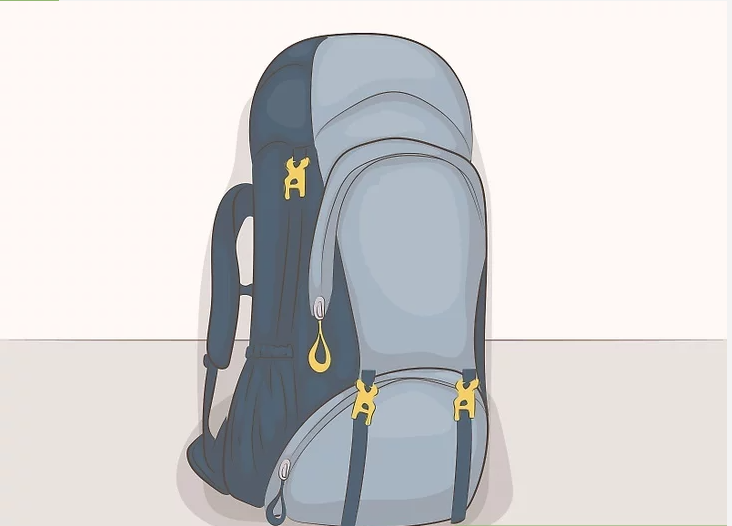
- 1Buy a well-constructed frame bag if you’re hiking or backpacking. If you plan on doing any long-term hiking or backpacking, get a well-constructed frame backpack to support the weight. Frame backpacks have built-in aluminum or plastic frames that help them keep their shape and reduce the strain on your back and shoulders. They also do a better job of stabilizing your belongings as you walk, which will make moving around a lot easier.[1]
- if you’re flying, you’re going to need to check a frame backpack. They’re typically too wide for the overhead storage compartments, and you usually can’t bring a backpack on a plane if it weighs more than 22 pounds (10.0 kg). A high-quality backpack usually weighs 3–5 pounds (1.4–2.3 kg) to begin with.
- If you’re going to do any camping, get a frame bag with a platform for your sleeping bag.
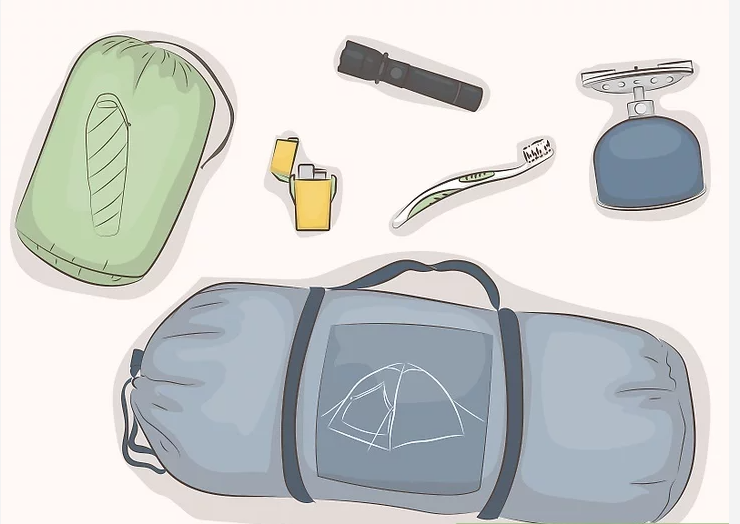
- 2Pack your hiking gear and sleeping bag in your backpack. Put all of your hiking gear inside of your backpack to ensure that you have adequate room. A toothbrush, sleeping bag, flashlight, lighter, tent, and portable stove are key. Don’t bother packing food unless you really have a ton of space left in your bag. You can always buy it along the way as needed.[2]
- Keep a few extra sets of clothes in your hiking bag if you can. If it rains or you’re moving through rough terrain, you’ll want to swap your dirty clothing out at the end of the day.
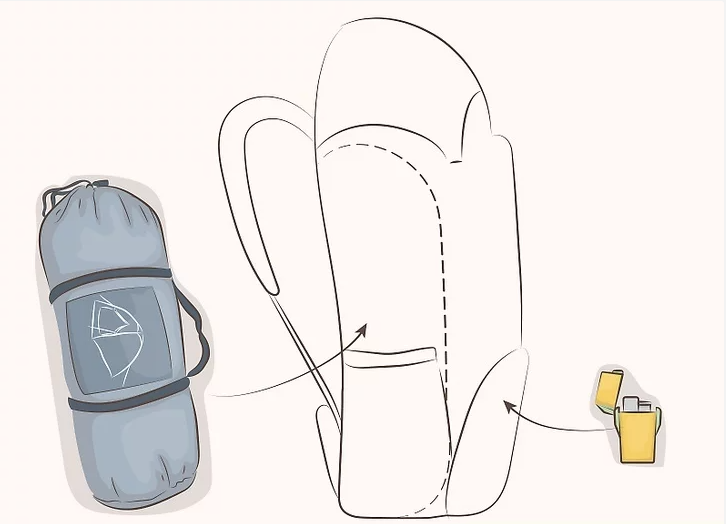
- 3Put your heaviest items closest to your back to prevent back strain. To maintain your center of gravity and minimize the amount of weight pulling on your shoulders, put your heaviest item against the back of the backpack, closest to your spine. Then, add the next heaviest item. Finish filling your bag by loading the exterior pockets with your smallest, lightest items.[3]
- If you place your heavier items further away from your back, they’re going to weigh you down. Packing in the order of heaviest to lightest can dramatically decrease how heavy your bag actually feels.
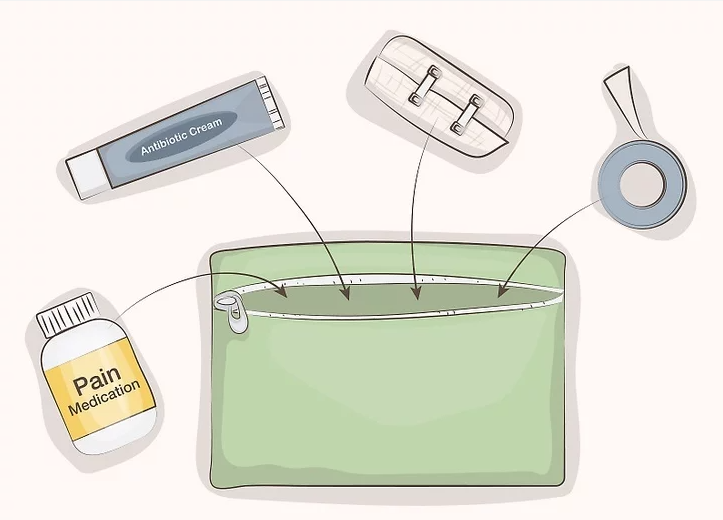
- 4Include a small first aid kit to keep yourself safe outdoors. If you plan on camping or hiking, get a small fabric or hard-shell case and fill it with bandages, medical tape, and antibiotic ointment. Include some over-the-counter pain medication and a pair of tweezers. You may want to include some blister cream if you’re prone to getting blisters when you hike.[4]
- You can always buy a first aid kit if you want to make things easy. These kits aren’t terribly expensive, and they can save you a lot of time if you’re trying to get the packing over with.
- If you’re allergic to anything, pack some antihistamines to minimize your symptoms while you’re outside.
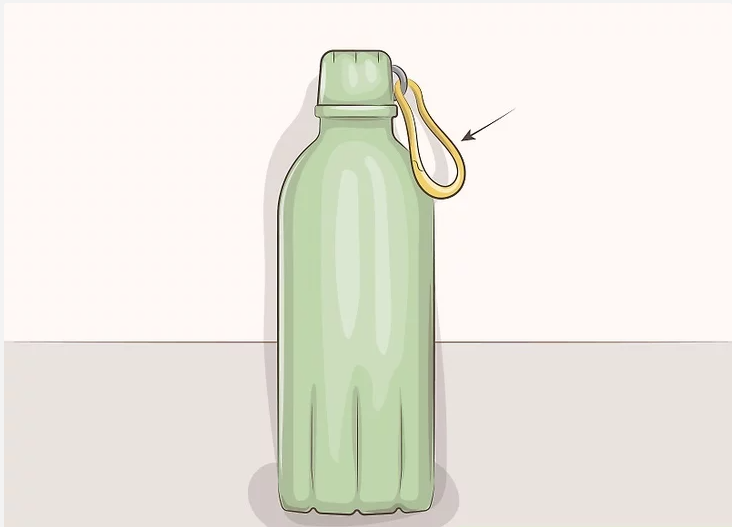
- 5Get a water bottle that clips to your bag to save space. If you absolutely need to bring a water bottle, get one with a loop around the lid. Latch your water bottle on to your backpack strap with a clip hook. This way, you can always keep your water bottle on you without taking up any space in your bag.[5]
- Consider buying a water bottle at your destination. They aren’t that expensive, and you can always bring it back with you.
- The same applies to your pan or pot if you’re camping or backpacking. Get pieces with loops in the handle so you can attach them to the exterior of the bag with clip hooks.
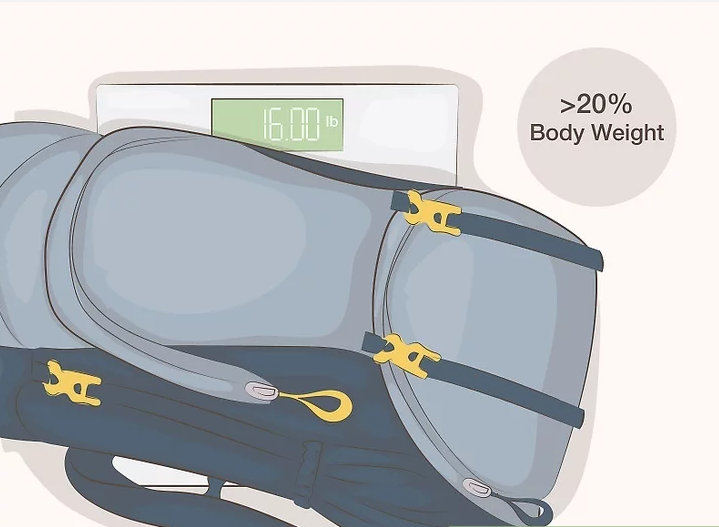
- 6Weigh your bag to ensure that it is less than 20% of your body weight. Backpacks can often carry well over 30 pounds (14 kg), but that doesn’t mean that you should pack it full every time. The weight of your bag should never exceed 20% of your body weight to preserve your back and shoulders. If your bag is too heavy, you may end up injuring yourself or straining your back. When you finish packing, put your bag on a scale to see how much it weighs.[6]
- For example, if you weigh 180 pounds (82 kg), your bag should weigh less than 36 pounds (16 kg) by the time that you’re done packing.
Method2
ADVERTISEMENT
Packing for Air Travel

- 1Use a standard backpack if you’re trying to blend in. If you’re traveling to a major city or popular tourist destination and you don’t want to stand out as a visitor, use a standard backpack. Regular backpacks are a great way to carry your things if you want a solid amount of space but aren’t packing a sleeping bag, cookware, or clothing. Choose a standard backpack based on how many compartments you need and how it looks on you when you’re wearing it.[7]
- If you’re getting on an airplane, you can usually bring a standard backpack on the flight if it weighs less than 22 pounds (10.0 kg). Look up the weight limitations for your airline, though. Some carriers have a slightly bigger or smaller restriction on the weight of personal items.
- If you’re traveling abroad and you’re worried about theft, get a bag with a zipper and sealable flap on top. These bags are much harder to steal out of. You can also opt for a bag with a lockable zipper if you really want to play it safe, although these bags are typically more expensive.
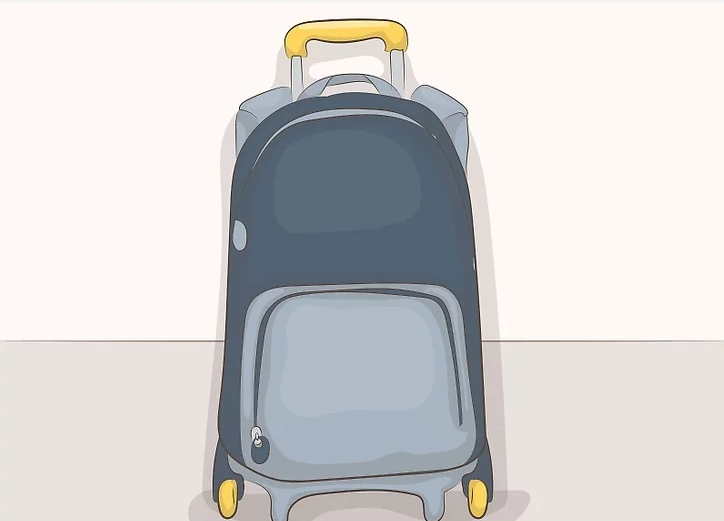
- 2Get a backpack with wheels if you’re doing a lot of walking. If you’re going to be walking a lot on paved or flat surfaces, get a backpack with wheels to save your back. This is a great way to bring a large array of items with you without risking fatigue or injury. Keep in mind that you’re going to stand out as a tourist though if you’re lugging around a backpack with wheels. Avoid these bags if you don’t want to draw attention to yourself.[8]
- You can usually bring a backpack with wheels on to a plane, but the dimensions of some bags may exceed your airline’s limit. Look up your airline’s policy regarding the size of carry-on bags to determine whether you need to check your backpack or not.
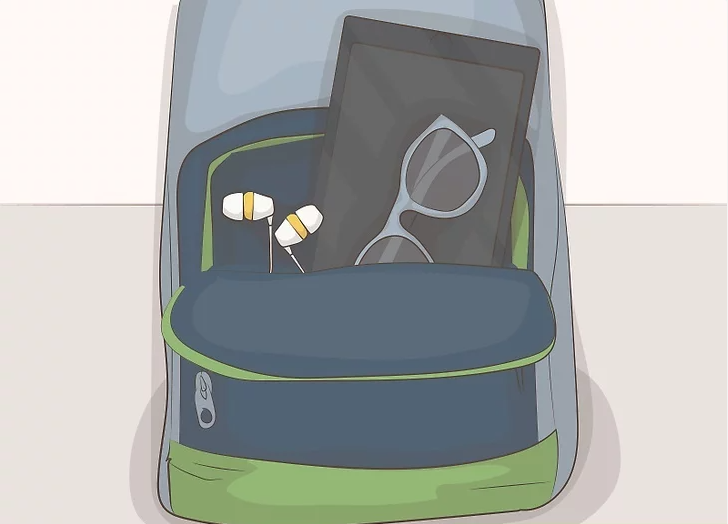
- 3Put sensitive items and electronics in the exterior compartments. If you’re bringing headphones, sunglasses, or a tablet, put them in one of your backpack’s smaller compartments to keep them from getting crushed or damaged by your heavier items. Pack expensive electronics in a case or wrap a clean shirt around it to keep it from getting scratched or scuffed by the backpack’s fabric.[9]
- Most standard backpacks have a dedicated compartment or pouch for your laptop. If you’re bringing a computer, put it in the designated section of your bag. These pouches and compartments typically have extra padding designed to keep the case safe.

- 4Pack liquids and toiletries in dedicated bags to avoid spills. If you’re bringing any lotion, toothpaste, shampoo, or perfume, throw it in a plastic bag. Get a durable, thick bag with an airtight seal and bundle your liquids and lotions together. This way, if any of the caps or tops pop off while you travel, it won’t destroy the contents of your bag.[10]
- You need to bag your liquids and toiletries if you’re flying anyway, so save yourself some time by putting them in a clear plastic bag before stashing them.
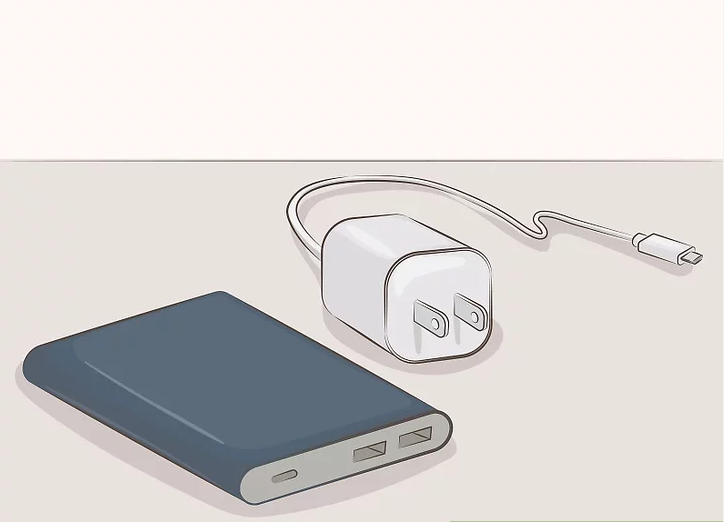
- 5Bring your phone charger and a portable battery. Phone chargers don’t take up a lot of space and they can be kind of expensive at the airport, so don’t forget them. Consider purchasing a portable battery in case you run out of juice while you’re traveling. Even if you’re abroad and don’t plan on using your phone, you never know when you’re going to need to make an emergency call.[11]

- 6Throw in destination-specific gear, like adapters and travel guides. Since your backpack will stay with you at all times, pack anything that you may need between hotels or while you’re out. If you’re going to a foreign country and you aren’t familiar with the language, pack a translation dictionary. Keep at least one outlet adapter so that you can charge your phone on the go.[12]
- Bring a pen and small notepad. They’re extremely useful when it comes to writing down addresses, directions, or reminders.
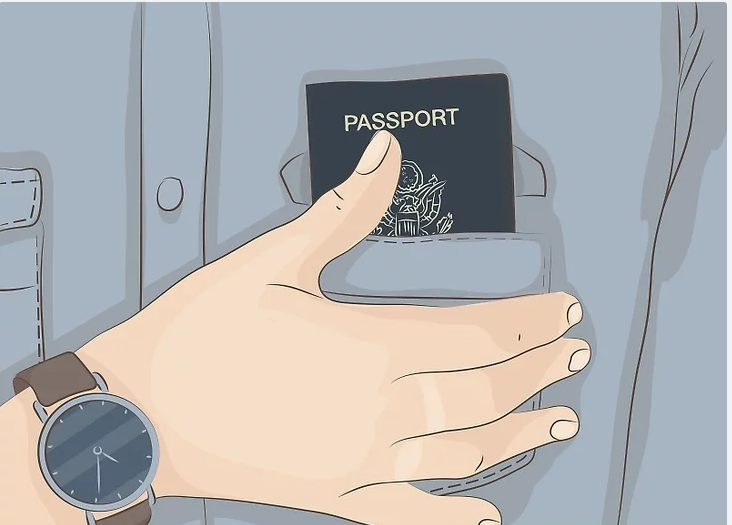
- 7Leave your valuables behind or keep them on you at all times. Wear your watch and keep it on to avoid having to rifle through your bag. Leave your jewelry behind unless you plan on wearing it at times. Keep your passport in your pocket and don’t pack all of your money away in your bag. If you lose your bag or it is stolen, you’ll be out a lot of money.[13]
- If you do bring valuables and you’re staying a hotel, use the safe in your wardrobe or closet.
Method 3
Traveling with a Single Backpack
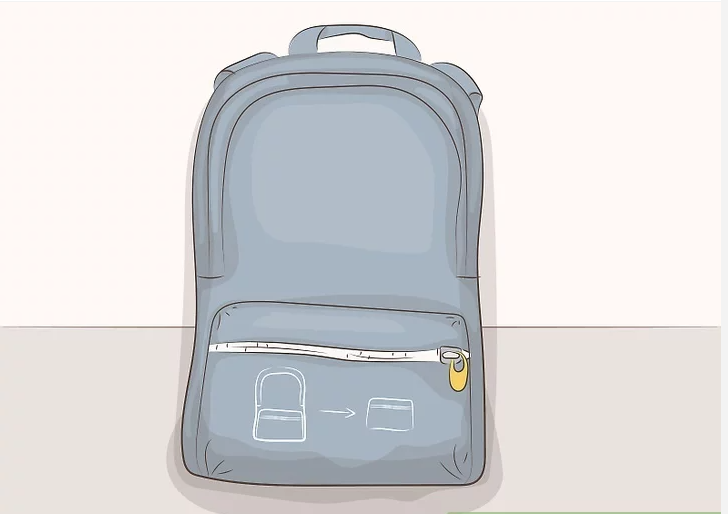
- 1Get a smaller, lightweight bag for business trips and vacations. If you’re only traveling for a few days and you’re traveling for business or leisure, there’s no need to weigh yourself down by stuffing a giant backpack. To stay comfortable, use a smaller backpack made out of a lightweight material. Smaller bags are also easier to tuck under your airplane seat if you’re flying.[14]
- You will rarely have a problem bringing a lightweight backpack on to a plane as your personal item.
- If you’re traveling for business, make sure that your lightweight bag is wide enough to fit your laptop. Some lightweight bags are really thin, and laptops are typically 13–17 inches (33–43 cm) wide.
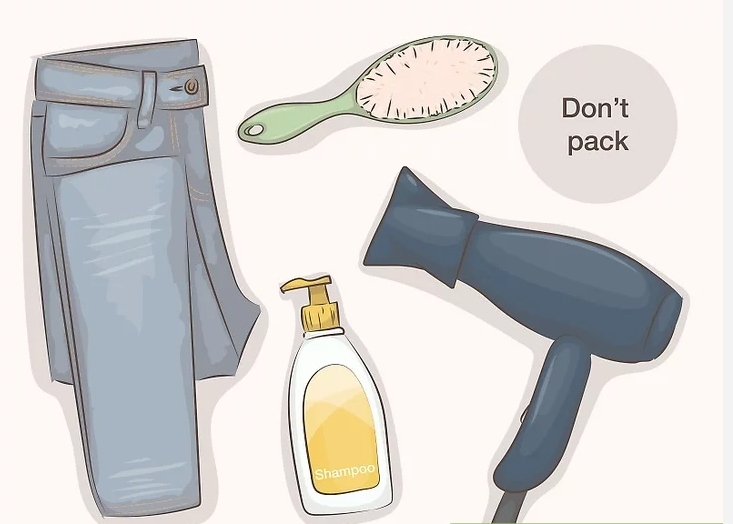
- 2Pack as lightly as possible and only bring what you need.[15] The less weight you store on your back, the better. Leave behind anything that you don’t need or can access at the hotel, like your hair dryer, shampoo, and optional medications. Leave your bulky jeans behind and opt for thinner sweatpants. Leave the large hair brush at home and bring a smaller comb instead.[16]
- If you’re staying at a hotel or hostel with a washing machine, only bring 2-3 outfits. Every 1-2 days, do laundry when you run out of clean clothes.

- 3Purchase travel-sized versions of things you absolutely need. Go to your local big box or grocery store and buy smaller versions of things that you know you’ll need. Deodorant, hairspray, hand soap, and contact solution will take up a ton of space in your backpack if you don’t bring miniature versions. Bring smaller versions of everything that you can to maximize the amount of space in your bag.[17]
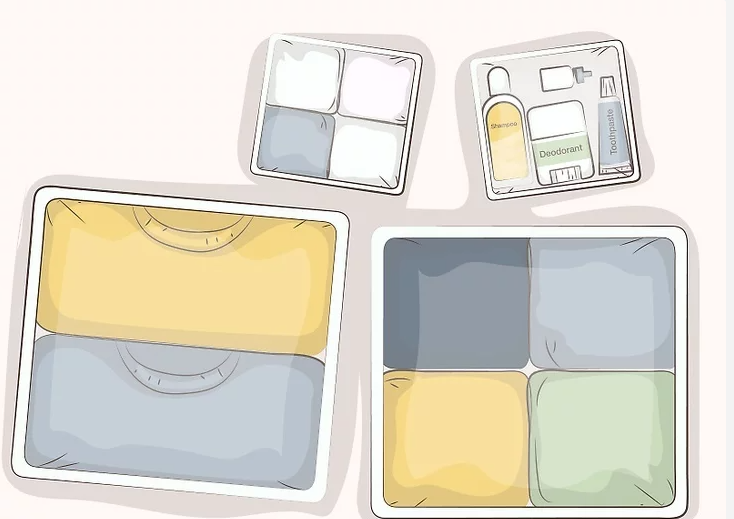
- 4Use packing cubes to make clothing as small as possible. If you’re putting clothes in your backpack, buy some packing cubes. These are plastic bags that are designed to minimize the amount of space clothing takes up by letting air out, but not in. Fold your clothes and fill the packing cube. Then, seal the zipper. Next, press down on the bag firmly to push the excess air out. Your clothes will collapse into a thin, airtight, easy-to-carry package.[18]
- A set of packing cubes will cost $10-25, but they’re a great way to minimize the amount of space your clothing takes up.
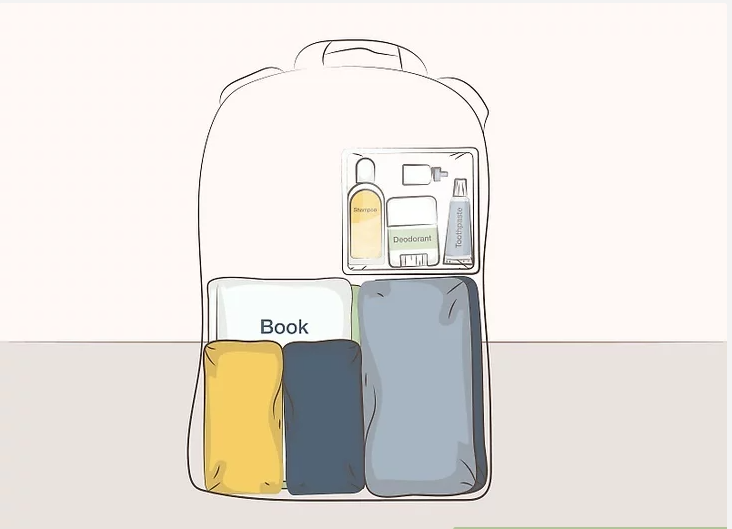
- 5Store your belongings upright to avoid wasting space. People rarely take advantage of the vertical space in a backpack. Pack clothing, books, and longer belongings vertically to ensure that you aren’t taking up the limited horizontal space in your backpack. Store items that are have a similar height next to one another to create a makeshift platform that you can put smaller items on top of.[19]
- Order your belongings from toughest to most sensitive when stacking items in your backpack.
Tips
- If your backpack has a strap at the bottom to hook around your waist, use it. This strap is designed to help keep your belongings upright and stable, which will minimize how heavy your bag feels.
References
- ↑https://pangolinswithpacks.com/the-definitive-guide-that-you-never-wanted-anatomy-of-a-backpack-50eea89bbe56
- ↑https://pangolinswithpacks.com/the-definitive-guide-that-you-never-wanted-anatomy-of-a-backpack-50eea89bbe56
- ↑https://youtu.be/DSc2QFmluDg?t=50
- ↑https://www.wta.org/go-outside/trail-smarts/like-your-life-depends-on-it-building-your-first-aid-kit
- ↑https://pangolinswithpacks.com/the-definitive-guide-that-you-never-wanted-anatomy-of-a-backpack-50eea89bbe56
- ↑https://well.blogs.nytimes.com/2009/07/21/weighing-school-backpacks/
- ↑https://pangolinswithpacks.com/the-definitive-guide-that-you-never-wanted-anatomy-of-a-backpack-50eea89bbe56
- https://www.youtube.com/channel/UCkg9QfuxpF8MCVYqCbrzq8A (best places to visit)
- ↑http://nymag.com/strategist/article/best-rolling-backpacks.html
- ↑https://well.blogs.nytimes.com/2009/07/21/weighing-school-backpacks/
- ↑https://www.washingtonpost.com/lifestyle/travel/leave-the-suitcase-at-home-heres-why-you-should-just-take-a-carry-on-and-how-to-pack-it/2019/06/06/65d312a2-83cb-11e9-bce7-40b4105f7ca0_story.html
- ↑https://www.nytimes.com/2018/09/13/travel/five-underrated-things-pack-any-trip.html?action=click&module=RelatedLinks&pgtype=Article
- ↑https://www.nytimes.com/2018/09/13/travel/five-underrated-things-pack-any-trip.html?action=click&module=RelatedLinks&pgtype=Article
- ↑https://www.ncconsumer.org/news-articles-eg/taking-valuables-with-you-on-vacation-heres-how-to-keep-them-safe.html
- ↑https://pangolinswithpacks.com/the-definitive-guide-that-you-never-wanted-anatomy-of-a-backpack-50eea89bbe56
- ↑Angela Rice. Luxury Travel Specialist. Expert Interview. 18 September 2020.
- ↑https://well.blogs.nytimes.com/2009/07/21/weighing-school-backpacks/
- ↑https://www.nytimes.com/2018/06/27/travel/long-term-travel-packing-tips.html
- ↑https://well.blogs.nytimes.com/2009/07/21/weighing-school-backpacks/
- ↑https://youtu.be/DSc2QFmluDg?t=50
